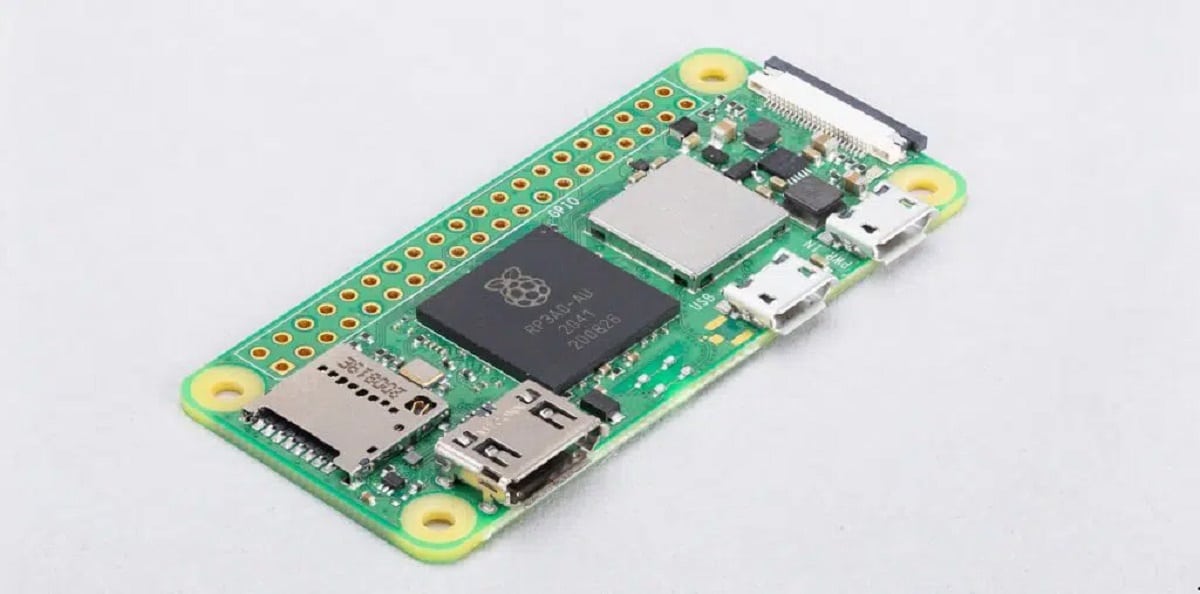
Eben Upton, founder of Raspberry Pi unveiled recently the new the Raspberry Pi Zero 2W It comes with a 1GHZ processor that, according to the manufacturer, offers 5 times more performance for multithreaded workloads than the Raspberry Pi Zero from 2015.
The new Raspberry Pi Zero 2W also brings Arm cores slightly slowed down to 1GHz, 512MB of LPDDR2 SDRAM bundled into a single space-saving cabinet for $ 15.
For those unfamiliar with the Raspberry Pi, please know that this is a credit card-sized ARM processor single board computer designed by professors from the Computer Science department at the University of Cambridge as part of the Raspberry Pi Foundation.
It was created to democratize access computers and digital creation. The Raspberry Pi allows the execution of several variants of the free GNU / Linux operating system, in particular Debian, and compatible software.
About the new Raspberry Pi Zero 2W
Priced at $ 15, the Raspberry Pi Zero 2W uses the same Broadcom BCM2710A1 SoC chip than the release version of the Raspberry Pi 3. The exact performance increase over the Zero varies with workloads, but for the multi-threaded sysbench, it is almost exactly five times faster.
Regarding the characteristics of the Raspberry Pi Zero 2W are as follows:
- Mini HDMI port
- 512MB LPDDR2 SDRAM
- CSI-2 camera connector
- 1 × USB 2.0 interface with OTG
- Graphics OpenGL ES 1.1, 2.0
- 40-pin HAT compliant I / O
- MicroSD card slot
- 2,4 GHz WiFi 802.11 b / g / n, Bluetooth 4.2, BLE
- H.264, MPEG-4 (1080p30) decoding; H.264 (1080p30) encoding
- Broadcom BCM2710A1, 64-bit Quad Core SoC (53 GHz Arm Cortex-A1)
- Composite video solder points and reset pin.
Raspberry Pi engineer Simon Martin, who designed the Zero 2W and the RP3A0 box that powers it, managed to squeeze all that extra performance into the original Zero form factor.
The main obstacle to creating a more capable Raspberry Pi Zero has always been the form factor- With a small board and single-sided component placement, there is no physical space to accommodate both main system on a chip (SoC) and discrete SDRAM.
Like Raspberry Pi 1, Raspberry Pi Zero and Zero W are based on the Broadcom BCM2835 SoC. The latter avoids the problem by using PoP (packet over packet) technology, in which the SDRAM box sits directly above the SoC.
PoP is an elegant solution if the silicon chip in the SoC is small enough to fit in the cavity between the top case of the SDRAM. Unfortunately, when Broadcom added a Quad Cortex-A7 (to create the BCM2836), then a Quad Cortex-A53 (to create the BCM2837), the chip went through the PoP cavity.
Thermal is challenging when packing more performance into a small package - how is the heat generated by the faster processor dissipated? Like other recent Raspberry Pi products, the Zero 2W uses thick internal copper layers to remove heat from the processor. If you have a Zero W and a Zero 2 W in your hands, you can really feel the difference in weight.
So far, sales have only started in the UK, the European Union, the US, Canada and Hong Kong; deliveries to other countries will be opened when the wireless module is certified. The cost of the Raspberry Pi Zero 2 W is $ 15 (for comparison, the cost of the Raspberry Pi Zero W board is $ 10 and the Raspberry Pi Zero is $ 5, the production of cheaper boards will continue) .
If you are interested in knowing more about it, you can check the details in the following link.
Finally, youIt is also worth highlighting the development of Raspberry Pi also announced a new official USB power supply to accompany the Zero 2 W.
It looks a lot like the Raspberry Pi 4 power supply, but with a USB micro-B connector instead of the USB connector. C, and with a peak current slightly reduced to 2.5A. Very useful if you want to power a Raspberry Pi 3B or 3B +.
The power supply is available with the following types of plugs: United States and Canada (type A); Europe (type C); India (type D); United Kingdom (type G); and Australia, New Zealand and China (type I).